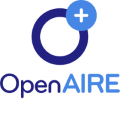BRIDGING EDUCATIONAL GAPS: A SYSTEMATIC REVIEW OF TRANSDISCIPLINARY, LITERACY, NUMERACY AND ACTIVE LEARNING METHODS
DOI:
https://doi.org/10.5281/zenodo.14064668الكلمات المفتاحية:
Working memory, Special Educational Needs (SEN) Students with Learning Disabilities, literacy and numeracyالملخص
In recent years, educational systems worldwide have struggled to address disparities in student performance. Traditional, isolated approaches to teaching literacy and numeracy often fail to engage a wide range of learners or develop crucial 21st-century skills like critical thinking, collaboration, and problem-solving. Transdisciplinary learning, which blends multiple subjects, has emerged as a promising strategy to address these challenges. Despite increased interest in transdisciplinary methods, there is a lack of thorough analysis on how combining these approaches with literacy, numeracy, and active learning strategies can reduce educational inequalities. This review compiles research to assess the effectiveness of these methods in boosting student engagement and achievement. The review identifies key three main themes were identified consists of (1) Transdisciplinary Approach in Education (2) Interventions in Early Literacy and Numeracy (3) Influence of Physical and Social interaction in learning. Evidence indicates that combining transdisciplinary approaches with active learning strategies improves outcomes, particularly for marginalized and struggling students. However, effective implementation requires significant teacher training and changes to traditional instructional models. When integrated with literacy, numeracy, and active learning, transdisciplinary education has the potential to significantly reduce educational disparities. Future research should focus on long-term studies to assess the impact across varied settings, with educators and policymakers prioritizing these innovative methods to ensure equitable, well-rounded education for all students.






